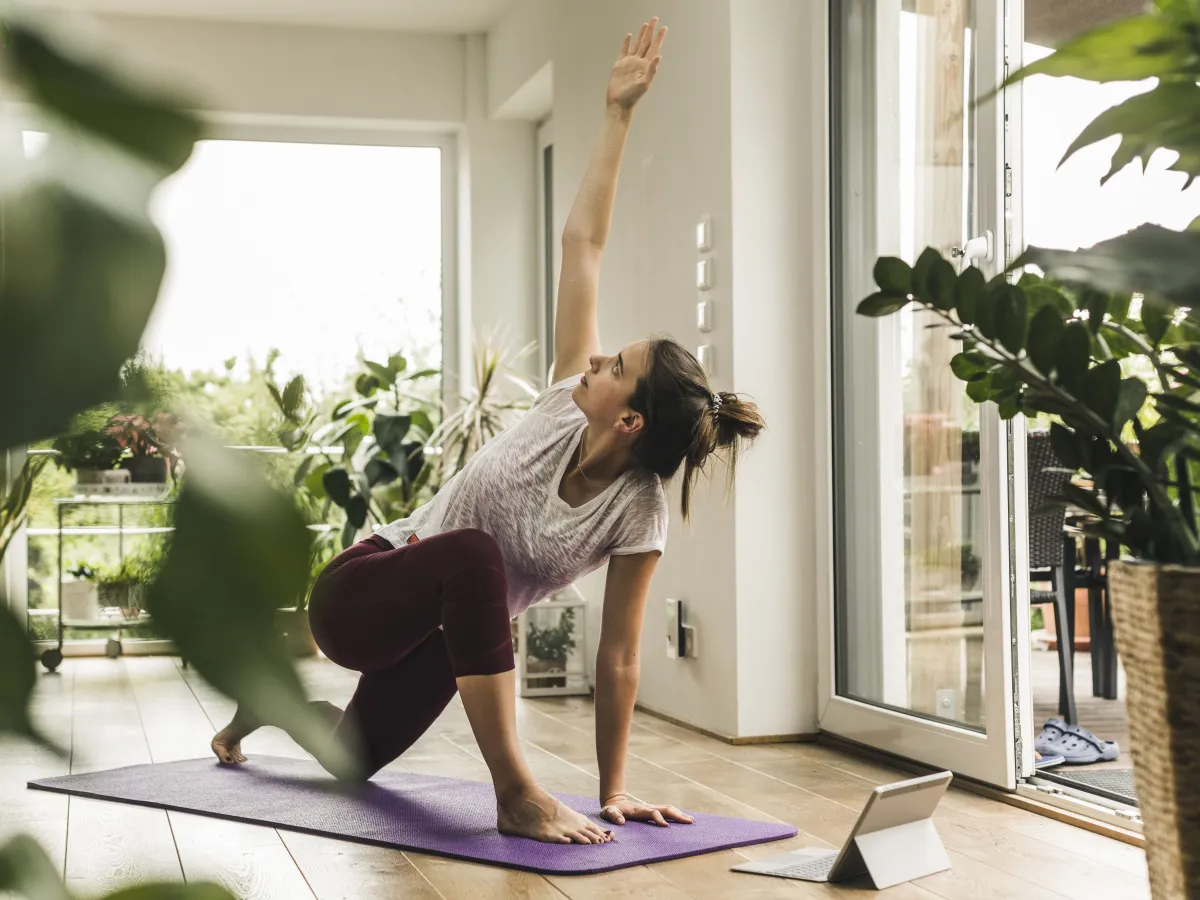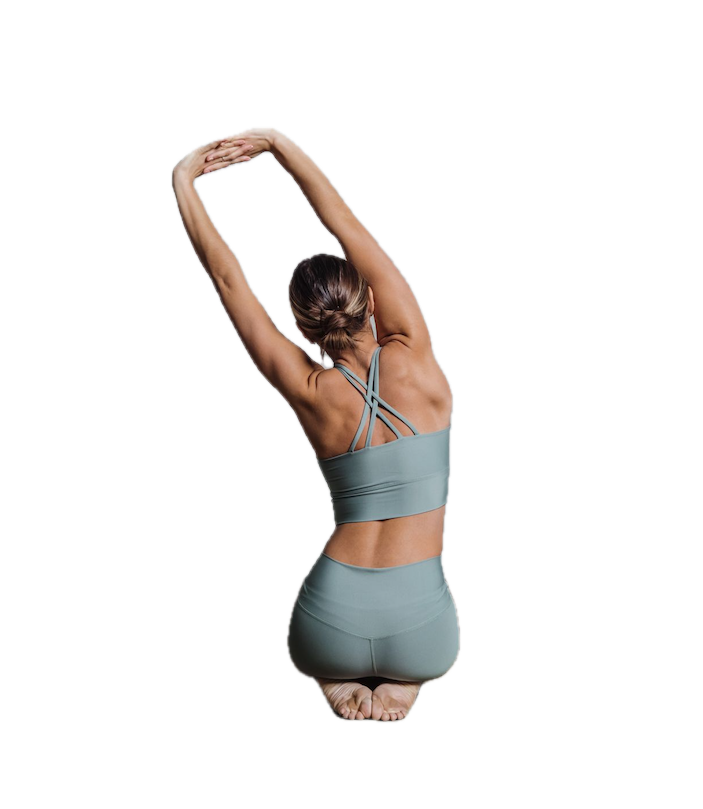
Home Workouts: Benefits and Tips
Home workouts have become increasingly popular, offering a practical and effective alternative to gym visits. With the hustle and bustle of daily life and the costs associated with gym memberships, many people are opting to transform a space in their home into their personal workout area. But what are the real benefits, and how can you make the most of this option? Find out in this article.
Benefits of Home Workouts
- Flexibility in Schedule
- You can work out anytime, fitting it into your routine.
- Ideal for those with demanding family or professional commitments.
- Cost-Effective
- Save on gym memberships, travel costs, and expensive equipment.
- Start with simple tools like a yoga mat, dumbbells, or resistance bands.
- Privacy
- Working out at home allows you to avoid crowds and feel more comfortable, especially as a beginner.
- No need to worry about being watched by others.
- Personalized Space
- Create an environment tailored to your preferences, with your choice of music, decor, and equipment.
- Consistency
- No interruptions due to holidays or external restrictions, such as pandemics.
Tips for Maximizing Your Home Workouts
- Designate a Workout Area
- Choose a space with good lighting and ventilation.
- Ensure there is enough room for full movements.
- Set Goals
- Have clear objectives, like losing weight, building muscle, or improving mobility.
- Track your progress to stay motivated.
- Invest in Essential Equipment
- Start with a yoga mat, resistance bands, and adjustable dumbbells.
- If possible, consider equipment like kettlebells or a pull-up bar.
- Follow Structured Workout Plans
- Use apps, online videos, or hire a personal trainer for guidance.
- Varying your workouts helps avoid monotony and promotes better results.
- Stay Consistent
- Create a fixed schedule for your workouts and make it a habit.
- Even short sessions, from 15 to 30 minutes, can be very effective.
- Don’t Skip Warm-Ups and Cool-Downs
- Prepare your body to avoid injuries and enhance performance.
- End each session with stretches to aid recovery.
- Create a Motivating Environment
- Use music or podcasts to keep you energized during workouts.
- Set rewards to maintain motivation.
Simple Home Workout Examples
- Strength Training (20 Minutes)
- Squats: 3 sets of 12 reps.
- Push-ups: 3 sets of 10 reps.
- Plank: 3 sets of 30 seconds.
- Cardio Workout (15 Minutes)
- Jump rope: 2 minutes.
- Burpees: 3 sets of 12 reps.
- Mountain climbers: 3 sets of 30 seconds.
- Mobility Workout (10 Minutes)
- Arm circles: 3 sets of 10 reps in each direction.
- Cat-cow stretch: 3 sets of 20 seconds.
- Spinal twists: 3 sets of 15 reps.
Conclusion
Working out at home is a practical and efficient solution for those looking to improve their physical condition and adopt a healthier lifestyle. With dedication, consistency, and the right tips, you can turn home workouts into a motivating and rewarding experience.
For more articles and workout plans, explore our website and find resources tailored to your needs. Enjoy your workouts!

Simple Exercises To Start Now
If you’re thinking about starting to exercise but don’t know where to begin, this article is for you. Often, the hardest part is taking that first step. That’s why we’ve prepared a list of simple exercises you can do at home, without needing any fancy equipment. Let’s get started!
1. Squats
Squats are excellent for working your legs and glutes, and they also help improve balance.
How to do it:
- Stand with your feet shoulder-width apart.
- Bend your knees, pushing your hips back as if sitting on a chair.
- Keep your back straight and your weight on your heels.
- Return to the starting position and repeat 10 to 15 times.
2. Plank
The plank is fantastic for strengthening your core, including your abs, lower back, and stabilizing muscles.
How to do it:
- Lie face down and support yourself on your forearms and toes.
- Keep your body straight, avoiding letting your hips rise or sag.
- Hold this position for 20 to 30 seconds, increasing the duration as you build strength.
3. Push-ups
Push-ups work your chest, arms, and shoulders, making them a great upper-body exercise.
How to do it:
- Start in a plank position with your hands slightly wider than shoulder-width apart.
- Bend your elbows to lower your body until it almost touches the floor.
- Push yourself back up to the starting position.
- If it’s too challenging, rest your knees on the floor for support.
4. Glute Bridge
This exercise is great for your glutes and lower back.
How to do it:
- Lie on your back with your knees bent and feet flat on the floor.
- Lift your hips until your body forms a straight line from shoulders to knees.
- Squeeze your glutes at the top and lower back down slowly.
- Repeat 10 to 15 times.
5. Marching in Place
For a simple cardiovascular workout, marching in place is a great option.
How to do it:
- Stand up and lift your knees alternately, mimicking a march.
- Swing your arms naturally with the movement.
- Do this for 1 to 2 minutes, increasing the pace as you feel comfortable.
Tips for Success
- Warm up first: Spend 5 minutes doing light movements like arm circles, dynamic stretches, or a short walk in place.
- Go at your own pace: Start with fewer repetitions and gradually increase them.
- Wear comfortable clothing: Ensure your outfit allows you to move freely.
- Stay hydrated: Drink water before, during, and after your workout.
Conclusion
You don’t need to complicate things to start exercising. These simple exercises are enough to improve your health and well-being while preparing you for more intense challenges in the future. Dedicate a few minutes each day, and you’ll soon notice the benefits.
For more tips and workout plans, visit our blog at www.treino.eu and begin your journey to a more active life today!

How to Maintain Consistency in Your Workouts
Consistency is one of the most important pillars for achieving fitness goals, whether it’s weight loss, muscle gain, or simply improving overall health. However, maintaining a regular workout routine can be challenging. In this article, we explore practical strategies to stay motivated and committed to your workouts.
1. Set Realistic Goals
Setting clear and achievable goals is essential. Overly ambitious goals can lead to discouragement. Instead of aiming to lose 10 kg in a month, start with smaller targets, like losing 2 kg per month. Regularly reassess your goals to adjust them based on your progress.
2. Create a Routine and Prioritize Workouts
Schedule your workouts just like you would a meeting or an important commitment. Choose a time that works best for you—whether it’s morning, afternoon, or evening—and stick to it consistently.
3. Make Workouts Convenient
Home workouts are an ideal solution for those with limited time or who prefer to avoid commuting. Use apps, online programs, or virtual trainers to guide your sessions.
4. Find Activities You Enjoy
If running isn’t your thing, don’t force it. Try different types of exercises, like yoga, strength training, dancing, or functional training, until you find something you truly enjoy.
5. Establish a Reward System
Reward yourself for staying consistent. It could be something small, like watching an episode of your favorite series after a workout, or something bigger, like buying new workout gear when you hit a milestone.
6. Track Your Progress
Record your workouts and results. Fitness apps, journals, or spreadsheets are excellent tools to monitor your progress and stay motivated.
7. Surround Yourself with Support
Share your goals with friends, family, or colleagues. Finding a workout buddy or joining online communities can increase your commitment and make the experience more enjoyable.
8. Embrace and Overcome Obstacles
Tough days are inevitable. Instead of feeling guilty about missing a workout, get back on track the next day. Remember, consistency doesn’t mean perfection.
9. Take Care of Your Body and Mind
Rest and a balanced diet are essential for physical performance. Invest in quality sleep and a diet that supports your goals.
10. Work with a Professional
Having a personal trainer or a personalized workout plan can make all the difference. They help structure a suitable program and keep you focused.
Maintaining consistency in your workouts requires dedication and strategy. Choose approaches that fit your lifestyle and remember that every workout is a step toward your goals. For more tips and personalized plans, explore other articles on Treino.eu and stay motivated!

Social Connections: Living in Community
The Importance of Human Connections
We live in a world that is increasingly digitally connected, yet we often feel a real disconnection from those around us. Studies show that social connections are not only beneficial for our mental health but also for our physical well-being. Maintaining healthy relationships and living in a community fosters a sense of belonging, reduces the risk of illnesses such as depression, and enhances the quality of life.
The Benefits of a Strong Community
- Emotional Support: Sharing good and bad moments with others helps reduce stress and builds resilience.
- Mutual Motivation: In environments like training groups, people tend to achieve their goals faster due to encouragement from others.
- Physical and Mental Health: Participating in community activities, such as sports or volunteering, improves cardiovascular health, reduces anxiety, and promotes happiness.
How to Build Stronger Connections
- Join Local Activities: Look for sports events, group classes, or community gatherings in your area.
- Volunteer: Volunteering is an excellent way to help others while developing meaningful relationships.
- Practice Active Listening: Take time to truly listen to others, building trust and respect.
- Use Technology to Connect, Not Disconnect: Social media can be a useful tool to stay in touch with friends and family but should not replace real interactions.
Practical Examples in the Training Context
- Outdoor Training Groups: Join groups that promote collective exercise, such as running or functional training sessions.
- Online Training Sessions: For those who prefer to train at home, virtual group classes can provide support and a sense of community.
- Team Challenges: Participating in challenges with friends or colleagues, such as marathons or competitions, increases commitment and adds fun.
The Role of treino.eu
treino.eu believes that social connections are fundamental to achieving success in fitness and well-being journeys. Our platform not only offers personalized training but also connects users with trainers and communities with similar interests. Together, we can create a support network that inspires and transforms lives.
Conclusion
Living in community is an essential part of achieving a balanced and healthy life. By investing in authentic human relationships, we not only improve our well-being but also contribute to a more united and harmonious world.

Sleep Well: The Elixir of Longevity
Sleep is one of the fundamental pillars of health and well-being, yet it is often overlooked in favor of busy schedules and daily commitments. Sleeping well is not just about rest; it is a true elixir of longevity. Studies show that a good night’s sleep is directly linked to improved quality of life and the prevention of various chronic diseases.
The Importance of Sleep for Health
During sleep, the body performs a series of essential functions, such as cell regeneration, strengthening the immune system, and memory consolidation. Additionally, there is a crucial hormonal balance that regulates appetite, stress, and metabolic processes. When sleep is inadequate or insufficient, the risk of developing issues like obesity, diabetes, hypertension, and depression increases significantly.
Benefits of Quality Sleep
- Improved Cognitive Function: Deep sleep enhances mental performance, including memory, problem-solving abilities, and creativity.
- Weight Regulation: Sleeping well helps control levels of ghrelin and leptin, hormones that regulate hunger and satiety.
- Stronger Immune System: Sleep enables the body to fight infections and reduce inflammation.
- Prevention of Chronic Diseases: Studies indicate that people who get enough sleep are less likely to develop cardiovascular diseases and type 2 diabetes.
Quantity and Quality: What Matters?
The ideal duration of sleep varies between individuals but generally ranges from 7 to 9 hours per night for adults. However, sleep quality is just as important as quantity. Restorative sleep involves progressing through all stages of the sleep cycle, from light sleep to deep sleep and REM, where the most restorative processes occur.
Signs of Poor Sleep
- Difficulty falling or staying asleep.
- Persistent fatigue during the day.
- Reduced cognitive performance and memory.
- Mood changes, such as irritability or apathy.
Tips for Better Sleep
- Establish a Routine: Keep consistent sleep and wake times, even on weekends.
- Create a Comfortable Environment: Invest in a suitable mattress and pillows and keep your bedroom dark, quiet, and at a comfortable temperature.
- Avoid Stimulants Before Bedtime: Limit screen time at least an hour before sleeping and reduce caffeine and alcohol intake.
- Engage in Physical Activity: Regular exercise promotes deeper, more restorative sleep, but avoid intense workouts close to bedtime.
- Relax: Try relaxation techniques, such as meditation or reading, to reduce stress before sleeping.
Conclusion
Investing in good sleep is investing in your health and longevity. Small changes to your daily habits can bring significant benefits to overall well-being and disease prevention. Start prioritizing your sleep today and discover how this simple act can transform your life.

Mental Resilience: Pushing Your Limits
Mental resilience is the ability to overcome challenges, adapt to adversity, and stay focused on your goals, even in difficult situations. In the context of fitness and everyday life, this skill is crucial for breaking through barriers, whether it’s a tough workout or a personal struggle.
What is Mental Resilience?
Mental resilience is more than just being “strong.” It involves developing strategies to handle stress, manage emotions, and keep moving forward. According to the American Psychological Association, resilience is a skill that can be cultivated and strengthened through consistent practice.
In sports, elite athletes exemplify mental resilience. They face constant pressure, physical and psychological challenges, yet remain focused on their objectives. The good news is that anyone can develop this quality.
Benefits of Mental Resilience
- Higher frustration tolerance: Face setbacks without giving up.
- Improved physical and mental performance: Resilience helps maintain focus in workouts and other life areas.
- Better stress management: Ability to handle high-pressure situations.
- Personal growth: Successfully overcoming difficulties fosters individual development.
How to Build Mental Resilience
- Set Clear Goals
Establish realistic and challenging objectives. Focusing on small, incremental steps prevents overwhelm. - Practice Self-Discipline
Create a daily routine that includes time for exercise, rest, and reflection. Consistency builds confidence. - Embrace Discomfort
Growth requires stepping out of your comfort zone. Treat discomfort as a necessary part of progress. - Manage Self-Talk
Replace negative thoughts with positive affirmations. Focus on your strengths rather than your shortcomings. - Practice Mindfulness and Meditation
Techniques like meditation help reduce stress and improve concentration. - Surround Yourself with Positivity
Train with people who motivate and inspire you. A positive environment is crucial for overcoming tough moments.
Resilience in Training
Mental resilience manifests in how we face intense workouts, resist the urge to quit, and push through even when it feels impossible.
For example, during a HIIT session or while lifting heavier weights, resilience helps you stay focused. Believing in your abilities and visualizing success are powerful ways to surpass physical limits.
Final Inspiration
Remember: resilience isn’t innate; it’s built through practice and determination. By strengthening your mind, you empower your body and gain the ability to overcome any obstacle.
Build your resilience, push past your limits, and become the best version of yourself!
For personalized support and expert tips, visit Treino.eu and start your fitness journey today.

Nutrition: The Pillar of a Long Life
Nutrition plays a fundamental role in promoting a long and healthy life. More than just a source of energy, food provides the essential nutrients that keep the body functioning properly, prevent diseases, and enhance overall quality of life.
The Role of Macronutrients
Macronutrients—proteins, carbohydrates, and fats—are the primary components of our diet, each with specific and complementary functions:
- Proteins: Vital for tissue repair and growth, proteins also support immune function and hormone production. Include lean meats, fish, eggs, and legumes in your daily diet.
- Carbohydrates: The body’s main energy source. Opt for complex carbohydrates like oats, sweet potatoes, and brown rice to maintain stable energy levels and promote satiety.
- Fats: Despite past misconceptions, fats are essential. Healthy fats from sources like olive oil, avocados, and nuts support cardiovascular health and brain function.
Micronutrients: Small but Mighty
Micronutrients, such as vitamins and minerals, are needed in smaller amounts but have a profound impact on health:
- Vitamins: Vitamins A, C, D, E, and the B-complex group are crucial for metabolism, immunity, and cellular health.
- Minerals: Nutrients like calcium, magnesium, iron, and zinc are key for building strong bones, transporting oxygen in the blood, and ensuring proper muscle function.
A diet rich in fruits, vegetables, whole grains, and lean protein sources ensures you meet these essential nutrient needs.
The Link Between Nutrition and Longevity
Scientific research has shown that balanced eating patterns, such as the Mediterranean Diet, are associated with greater longevity. This type of diet emphasizes fruits, vegetables, healthy fats, and high-quality protein sources while limiting processed foods and added sugars.
Additionally, strategies like portion control, adequate hydration, and intermittent fasting (when guided by professionals) have demonstrated benefits for metabolic health and the prevention of chronic diseases.
Personalized Nutrition
There’s no one-size-fits-all approach to healthy eating. Biological individuality, specific needs, and personal goals must be considered. Consulting a nutritionist is a valuable step toward creating a tailored eating plan that aligns with your unique requirements, fostering both well-being and longevity.
Conclusion
Nutrition is undoubtedly one of the most important pillars for a long and fulfilling life. Conscious and balanced dietary choices, combined with an active lifestyle, are your best allies in living better and longer.
Now is the time to view your diet as a powerful tool for health and longevity. Start today!

Physical Strength: A Foundation for Longevity
Longevity is a goal shared by many, but living longer isn’t just about adding years to your life. It’s about ensuring quality of life, independence, and vitality as you age. Physical strength plays a critical role in this journey, serving as one of the most important pillars for aging healthily and resiliently.
Why is Physical Strength Important?
As the human body ages, it undergoes various changes, including the loss of muscle mass and bone density. This process, known as sarcopenia, can start as early as your 30s and accelerates after 60. Without a strong musculature, the risk of falls, injuries, and loss of independence increases.
Studies show that maintaining muscle strength not only prevents these issues but also improves cardiovascular health, regulates blood sugar levels, and enhances mental well-being. In short, physical strength is essential for living with energy and independence.
Benefits of Building Physical Strength
- Prevention of Chronic Diseases: Strength training reduces the risk of type 2 diabetes, hypertension, and cardiovascular diseases.
- Improved Mobility: Strong muscles support healthy joints and make daily movements easier.
- Increased Endurance: Greater strength enables you to perform tasks with less effort, even in advanced age.
- Psychological Well-being: Physical training is associated with reduced symptoms of anxiety and depression, as well as improved self-esteem.
How to Strengthen Your Body for Longevity
Building and maintaining physical strength requires consistent commitment to physical activity and a healthy lifestyle. Here are some strategies:
1. Resistance Training
Exercises such as weightlifting, functional training, or bodyweight exercises are ideal for building and maintaining muscle mass.
Tip: Start with two to three sessions per week, focusing on exercises for all major muscle groups.
2. Balance and Flexibility Training
Practices like yoga and Pilates help improve posture, prevent falls, and increase mobility.
Tip: Include stretching or yoga sessions in your weekly routine.
3. Proper Nutrition
A diet rich in proteins, vitamins, and minerals is crucial for muscle building and bone maintenance.
Tip: Incorporate sources of lean protein (such as fish, chicken, or legumes) and foods rich in calcium and vitamin D into your diet.
4. Rest and Recovery
Rest is just as important as training. During sleep, the body repairs muscles and strengthens bones.
Tip: Prioritize 7-9 hours of sleep per night and include rest days in your training routine.
Inspiration to Start
Regardless of age or fitness level, it’s never too late to begin. Small changes in your routine can lead to significant improvements in strength and quality of life.
At Treino.eu, we are here to support you on this journey. Explore our articles and programs to find the right plan for your needs and goals. Remember: the strength you build today will be the foundation for your tomorrow.
Conclusion
Physical strength is more than just an indicator of fitness. It’s a vital component of a long, healthy, and independent life. Invest in yourself, start today, and build a solid foundation for a more active and happy future!

Managing Stress: The Key to Mental Health
In today’s world, stress has become an inevitable part of our lives. Whether due to work pressures, personal challenges, or information overload, many people face high levels of stress daily. While stress is a natural response of the body to challenging situations, chronic stress can significantly impact mental and physical health. Managing stress is, therefore, essential to maintaining balance and well-being.
What is Stress?
Stress is the body’s response to situations perceived as threatening or challenging. This response activates the nervous system and triggers the production of hormones like cortisol and adrenaline, preparing us to react. While this mechanism is useful in short-term situations, prolonged exposure can lead to health issues, including anxiety, depression, hypertension, and more.
Signs of Chronic Stress
Recognizing the signs of chronic stress is the first step to managing it effectively. Some signs include:
- Constant feelings of worry or anxiety.
- Irritability or mood swings.
- Sleep problems, such as insomnia.
- Frequent headaches.
- Persistent fatigue.
- Difficulty concentrating.
If these symptoms are recurrent, it’s important to adopt strategies to reduce stress’s impact on daily life.
Strategies for Managing Stress
Fortunately, there are several techniques that can help reduce stress and promote mental health:
1. Mindfulness and Meditation Practices
Mindfulness involves being present in the moment without judgment. Studies show that meditation can significantly reduce stress levels and improve the ability to handle challenging situations.
Tip: Dedicate 10-15 minutes daily to meditation or deep breathing exercises.
2. Regular Physical Activity
Exercise is one of the most effective ways to combat stress. Physical activity helps reduce cortisol levels and releases endorphins, the feel-good hormones.
Tip: Find an activity you enjoy, such as walking, running, or practicing yoga, and do it regularly.
3. Setting Healthy Boundaries
Learning to say “no” is essential to avoid burnout. Identify your priorities and focus on what truly matters.
Tip: Organize your time using lists or task management tools.
4. Maintaining a Balanced Diet
A nutrient-rich diet can help regulate energy levels and improve mood. Avoid excessive caffeine and sugar, which can increase feelings of anxiety.
Tip: Include foods like nuts, seeds, fruits, and vegetables in your diet.
5. Connecting with Others
Maintaining healthy social relationships is essential for emotional well-being. Talking to friends or family can help alleviate tension.
Tip: Make time to socialize, even if it’s just a phone call.
When to Seek Professional Help
If stress persists and significantly interferes with your life, consider seeking help from a mental health professional. Psychologists and therapists can offer personalized strategies to manage stress and improve quality of life.
Conclusion
Managing stress is an essential skill for living a healthier and happier life. By adopting small changes in your daily routine, you can reduce the negative effects of stress and enhance your overall well-being. At Treino.eu, we’re here to support you on this journey. Explore our blog for more tips and strategies to help you live a more balanced life!

Lessons for Longevity from Chris Hemsworth’s Series Limitless
The series Limitless, featuring actor Chris Hemsworth, offers an inspiring perspective on longevity and how to live healthier, fuller lives. Across six episodes, Hemsworth delves into different areas that influence our ability to live longer and better, facing physical and mental challenges while learning from experts. This article aims to extract valuable lessons from the series that can be applied to our daily lives, especially for those who prioritize health and well-being.
1. Managing Stress: The Key to Mental Health
In the first episode, Hemsworth explores the impact of chronic stress on the body. The message is clear: stress is not just a mental state but also a physical one, capable of accelerating aging. Meditation, breathing techniques, and mindfulness are suggested as tools to counteract the negative effects.
Practical Tip: Dedicate 10 minutes daily to mindfulness or guided meditation. This can reduce cortisol levels and improve overall health.
2. Physical Strength: A Foundation for Longevity
A strong body is essential for facing aging with resilience. Chris learns the importance of regular exercise, focusing on activities that enhance strength and flexibility. Maintaining muscle mass is crucial for preventing injuries and preserving autonomy in old age.
Practical Tip: Include resistance training (such as weightlifting or functional training) in your routine at least 2-3 times a week.
3. Nutrition: Nutrients as the Pillar of Longevity
The series highlights the impact of diet on longevity. Diets rich in processed foods can contribute to chronic inflammation, while eating whole foods, fruits, vegetables, healthy fats, and lean proteins promotes cellular health and longevity.
Practical Tip: Embrace the concept of “eating the rainbow” – include foods of various colors on your plate to ensure a wide range of nutrients.
4. Mental Resilience: Overcoming Limits
The ability to face challenging situations, such as jumping from heights or enduring extreme temperatures, is explored by Hemsworth as a way to develop mental resilience. The lesson is clear: challenging your limits is essential for growth and adaptation.
Practical Tip: Incorporate challenges into your routine, such as taking cold showers or engaging in activities that push you out of your comfort zone.
5. Quality Sleep: The “Elixir” of Longevity
Sleep plays a central role in the body’s recovery and mental health. Hemsworth discovers the importance of sleeping 7-8 hours per night and maintaining a consistent sleep routine to maximize its benefits.
Practical Tip: Create a sleep-friendly environment by reducing exposure to blue light before bed and establishing regular bedtime and wake-up schedules.
6. Social Connections: Living in Community
One of the most powerful messages of the series is the importance of social bonds. Studies referenced demonstrate that maintaining healthy relationships and a strong sense of community are linked to longevity.
Practical Tip: Invest time in meaningful relationships. Join social groups or activate your network of friends and family.
Inspiration for Your Journey
The series Limitless is not just a testament to Chris Hemsworth’s journey but an invitation for everyone to reflect on how to live more fully and consciously. Each episode offers tools that can be integrated into our routines, promoting a longer and healthier life.
At Treino.eu, we believe every step counts in the pursuit of well-being. Start today with small changes and see how you can transform your life. Don’t forget to explore our blog for more tips and related articles!

